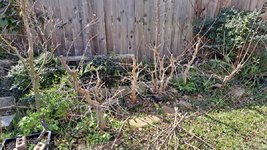Based on the scientific facts of how scrapping away the cambium only, it seems that air-layering before or after leaf hardening shouldn't really matter
I think it depends on how scientifically factual your plant information is.
In the spring there's a huge increase in auxin, as the foliage needs to expand and widen to get enough surface area. Auxins that do this, can help tissue differentiate into roots.
Later in the year, those levels drop a little since there's no need for aggressive expansion. That's when cytokinins are more at play (relatively) and callus tissue is formed more easily because of that.
Some plants have trouble differentiating from callus to roots, other have such low auxin sensitivity that the timing doesn't matter. So there's a stance on both sides that's correct.
It helps to know what kind of plant you're dealing with and zoning in on making use of their own biological triggers.
Hornbeams for instance, can create whole chunks of callus tissue that hardly differentiates, I would do those in spring before the leaves emerge.
Maples on the other hand are steady producers throughout the year and seem to root better later in the year, because their callus tissue easily differentiates and they produce so much auxin in spring that it even inhibits rooting.
Pines on the other hand, produce huge amounts of auxins but they're not very sensitive to it and their callus tissue doesn't like to differentiate into roots. That's why they're notoriously hard to layer. But they seem to root better at the end of the year, when cytokinins interplay with the late summer auxins. To propagate them vegetatively, cytokinins and auxins need to be applied at a 1:4 ratio.
Oaks do neither and they will probably not layer well at all.
If you want longer root formation, just leave the layer for longer?
My point is that every plant has a different set of rules to the game, and it helps to understand and make use of these rules.

